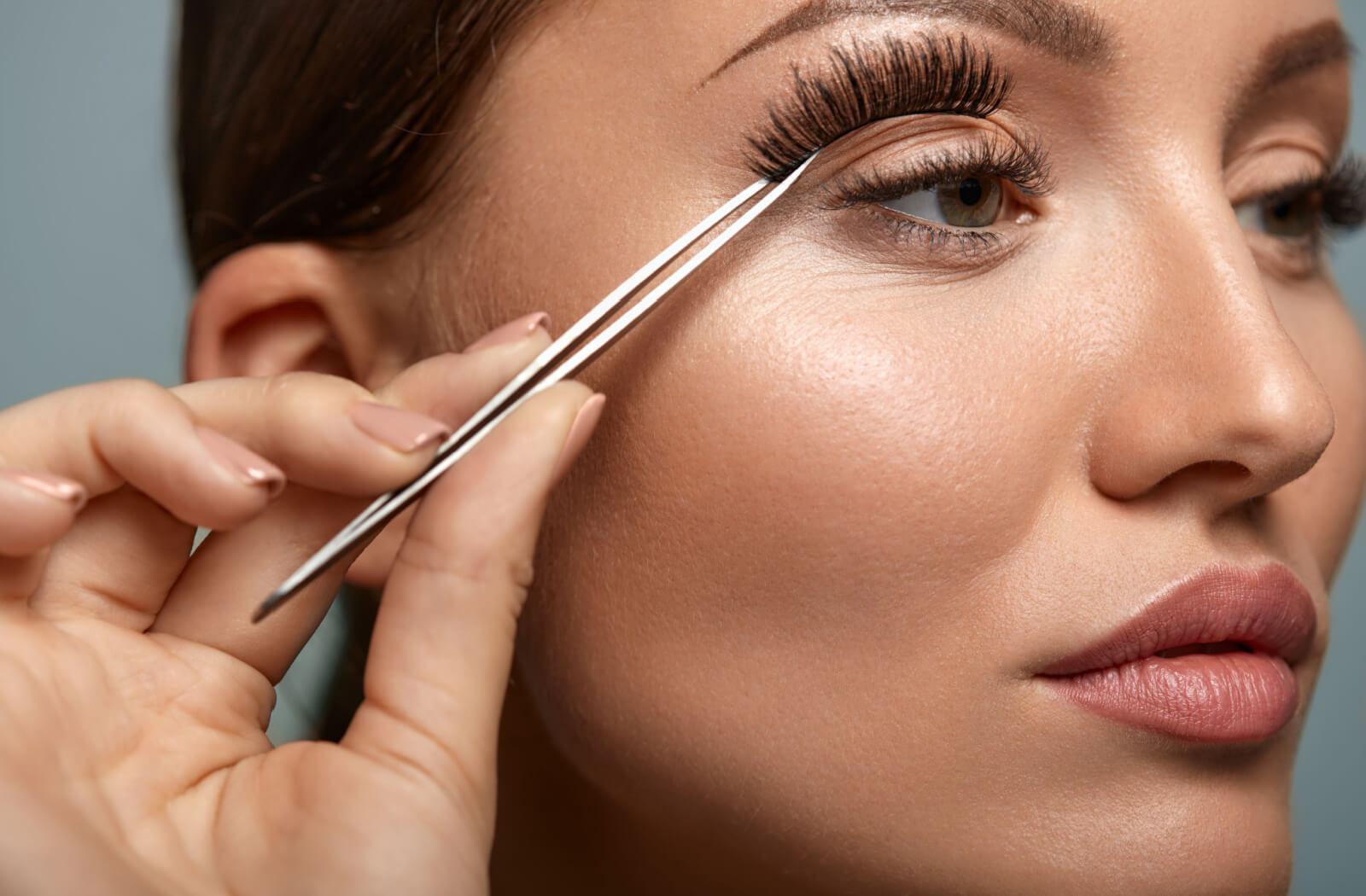Our natural eyelashes are very helpful in protecting the eyes, but do fake eyelashes increase your risk for dry eye? Common causes of dry eye are prolonged contact lens wear, dry air, and even simply getting older. But eyelashes aren’t always a common topic when discussing dry eye.
It’s worth mentioning that there isn’t a high risk of permanent damage to your eye from dry eye. However, there is the risk of some complications, such as infection or scratches to the eye’s surface. If you’re suddenly experiencing persistent dry eye symptoms, it’s a good idea to see an optometrist. They can perform an eye examination and ensure that nothing more serious is going on to cause the symptoms.
What Is Dry Eye?
The eye produces tears that are responsible for lubricating the eye and preventing contaminants from doing any damage. They are a complex mixture of proteins, water, and oils. When the eye doesn’t produce enough tears or low-quality tears that evaporate too quickly, the result is uncomfortable dry eye symptoms.
Dry eye is a chronic condition that can come back repeatedly. It’s possible to experience some symptoms out of nowhere. For example, wind or smoke blowing in your face, extended periods looking at a computer screen, or dry air are all things that could leave you with dry, itchy eyes.
Can Fake Eyelashes Cause Dry Eye?
While fake eyelashes look great, they may not be the best option if you’re prone to suffering from dry eye. A study done at the Georgia Institute of Technology determined the optimal length of the eyelashes to be one-third of the eye’s width, approximately the average natural eyelash length.
The study discovered that eyelashes of the one-third ratio helped form a barrier to control airflow and the rate of tear evaporation. If the eyelashes were shorter, this effect was still present but not as pronounced.
However, the opposite happened when the study looked at eyelashes extending past the one-third ratio. Instead of stopping the air, the longer lashes created a funnel that increased the amount of air and debris that hit the eye.
In addition, here are some other reasons that suggest that lash extensions can contribute to dry eye:
- Since you cannot clean them as thoroughly as natural eyelashes, the potential for dirt, debris and bacteria to build up can increase the chance of infection and dry eye symptoms
- When artificial eyelashes are glued to the eyelid, it’s possible that the meibomian glands could be blocked. This would reduce the amount of oil in your tears and make them evaporate quickly
More Potential Issues From Fake Eyelashes
Dry eye isn’t the only potential eye problem that could result from fake eyelashes. You could also be possibly allergic to the glue adhesive used to attach the eyelashes to the eye.
Additionally, there may be a chance that the eyelash and its glue adhesive falls out and gets stuck in the eye. This will cause irritation and possibly an eye scratch.
Treating Dry Eye
If you are experiencing dry eye symptoms after getting lash extensions, it’s best to have them carefully examined by an optometrist. Your optometrist may suggest having the lashes professionally removed if it is the root problem.
However, if eyelashes aren’t the problem, there are some other things you can do to get relief from the uncomfortable symptoms:
- Eye drops: Over-the-counter (OTC) and prescription eye drops are available. Some are simply to replace your tears and lubricate and others are to reduce inflammation.
- Heat and massage: This can be done at home with a warm compress or a special heating mask. Once the eyelid is heated, it’s massaged to stimulate the oil glands. In more severe cases, Lipiflow may be an option. This unique in-office procedure and massages much more effectively than a heating mask at home.
- In-office procedures: The technology for dry eyes has grown tremendously in the past few years. LipiFlow, Intense Pulsed Light and Radiofrequency helps halt dry eye symptoms over-time and reduces the need for eye drops. Your dry eye optometrist will know what is best suited for you.
Weighing the Pros and Cons of Fake Eyelashes
If you’re already prone to dry eye syndrome, it’s a good idea to weigh the pros and cons of getting fake eyelashes, even though they’ll look great. But it may not be a big deal if you’ve never had a problem. The best thing to do is sit down with an optometrist that has expert knowledge in dry eye. Once they look at your eyes, they’ll be able to determine your risk level for dry eye.























